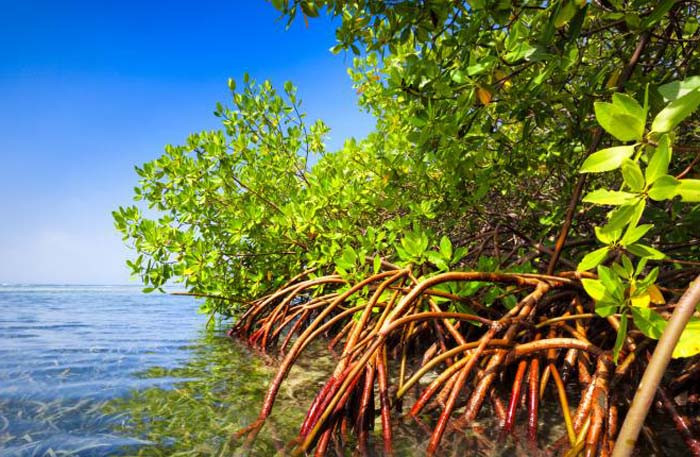Indonesia has the most extensive mangrove ecosystem in the world and the highest biodiversity. With a coastline 95.181 km2 long, Indonesia has a mangrove area of 3,489,140.68 Ha. Mangroves face a major challenge in the form of land conversion. Various interests, such as ponds, settlements, plantations, industry, and coastal/port infrastructure often sacrifice the existence of mangroves. The most basic and important thing to understand is that mangrove species are able to grow and develop in coastal environments with extreme salt levels, saturated water, heavy metal pollutant condition, and less stable and anaerobic soils. With these environmental conditions, some types of mangrove plants are able to develop mechanisms enabling them to extract salt from their tissue. Meanwhile, other organs have the ability to adapt by developing a breathing root system to obtain oxygen from the root system living in anaerobic substrates.
Phytoremediation is an attempt to use plants and their parts to decontaminate waste and pollution problems. Phytoremediation methods that have been used commercially or are still in the research stage are based on the ability to accumulate contaminants (phytoextraction). The ability of roots to absorb contaminants in the tissue (phytotransformation) is also used in phytoremediation strategies.
The first thing to do is taking samples of water, sediments, and mangroves in the Mlaten Pasuruan region of East Java, then analyzing them with the AAS (Atomic absorption spectroscopy) method to determine the lead content (Pb). The results showed average heavy metal content of Pb in water was 0.142 ppm. The content of average Pb in sediments was 3.10 ppm. The Pb heavy metal content in the water has exceeded the allowable threshold based on Ministerial Decree No.51 of 2004 the Pb threshold limit is 0.008 mg / l, while the sediment is still below the minimum value issued by NOAA regarding the minimum limit of metal content that can be tolerated in sediment for heavy metal lead (Pb) which is equal to <30.240 ppm. The average of Pb content in roots of Rhizophoramucronata was 2.11 ppm. The average of Pb content in leaves of Rhizophoramucronata at station 1 was 0.45 ppm. The average content of Pb in stems was 0.27 ppm, the average content of heavy metals Pb in seeds was 0.43 ppm. Information related to the ability of mangroves as bioremidiator is very useful for managing coastal resources and controlling pollution in Indonesian waters.
Author: Wahyu Isroni
Details of this research available at:





